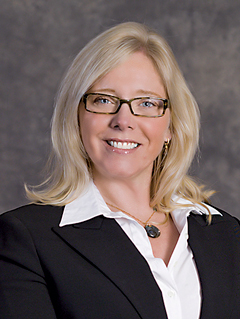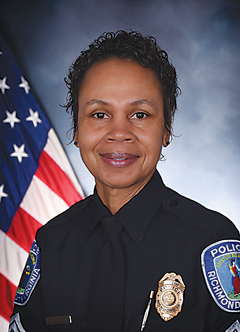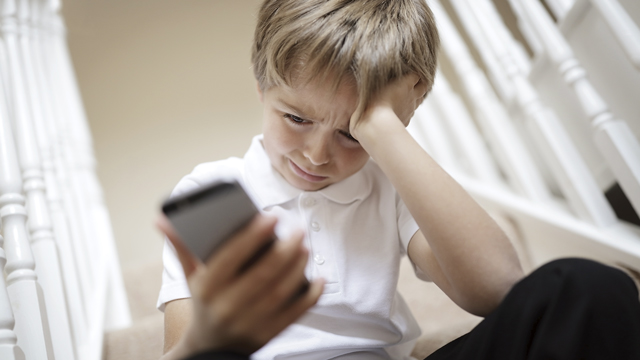It started with an Instagram post of two sisters on Sibling Day. They were smiling and happy. Before long, though, the comments appeared:
hahaha these @#$% losers – your sister needs to be really helped
LMFAO! IM ACTUALLY DIEING
LOL IKR
The older sister, fifteen, responded to the harsh commentary, which had come from two boys who were classmates of her younger sister. The war of words escalated, and the girls’ mother, Barbara*, stepped in, calling the parents of the two classmates. Barbara says one parent denied his son had access to social media, so he couldn’t be responsible. The other parent was more direct, but no more helpful. “What do you want me to do about it?” she said to Barbara. “Just tell your daughter to block [my child].”
Before that could happen, one final piece of advice came from that child to Barbara’s daughter: go kill yourself.
Ask a group of adults what “bullying” means, and you’re likely to hear a range of answers. One person might cite physical intimidation to gain something – money or physical possessions. Someone else would point to actions designed to ostracize someone from a social group. Another could say bullying is a whisper campaign designed to smear a reputation.
But we now live in the age of technology and social media, and bullying has a new dimension: the ability to criticize someone online. This is cyberbullying.

“There’s something about the cloak of anonymity that can embolden people,” notes Allison White Twente, PhD, a psychologist with Westhampton Family Psychologists, PC. “Kids feel free to use different words online. There’s a certain distance to say and do things they wouldn’t normally say and do.”
The irony, Twente notes, is that while someone posting a nasty comment online might feel freer to do so because he isn’t standing in front of his target, the person on the receiving end often feels worse for the exchange than she might have had it happened in person.
“Because we see this stuff on our devices at home, it can feel more violating,” she says. “It reaches you where you should feel safest.”
Another element, according to Twente, is that children often share elements of their life on social media because they are seeking validation from peers. Then, when the attention comes and it’s negative, Twente says children may “feel complicit” in the behavior, even though they’ve done nothing to cause it, so they may not turn to adults for help. “In elementary school, kids are taught how to stand up if it’s face-to-face communication,” she says, “but the cyber realm is slippery.”
So what’s a parent to do?
Joanne’s* son was a target for taunting early on because he was much smaller than his peers. While the bullying was more traditional during elementary and middle school years – usually physical confrontations – the availability of technology eventually added a new dimension. To minimize opportunity, Joanne did not allow her son to have a personal cell phone until he was in high school. And when he got a phone, the type and plan she chose could block unwanted communication. Still, it was a battle to keep the nastiness at bay.
“I would see him look at his phone, make a face, and stuff it in his pocket,” she says. “Then he’d get really quiet.”
Because not everything – or everyone – could be blocked, she made a habit of reading the phone’s content.
“I did feel like a nosy mother,” she says. “It didn’t bother him, because he knew there was nothing there that he wrote that I wouldn’t like.”
 Joanne also took her son to meet with a professional psychologist, so he could develop strategies to help him respond, either in person or online. “We had to help him find a way to deal with it,” she says. “It made him feel like he had power.”
Joanne also took her son to meet with a professional psychologist, so he could develop strategies to help him respond, either in person or online. “We had to help him find a way to deal with it,” she says. “It made him feel like he had power.”
Joanne admits it can be difficult for parents to navigate a cyberbullying situation. “You have to ask your kid what’s going on and ask questions in sneaky ways,” she says. “You really can’t prevent it.”
 Scott Walker agrees that cyberbullying isn’t preventable. Walker is the founder of TeenSafe, a subscription software program that allows parents to monitor calls, texts, location, and web history on their child’s phone. Walker developed the system after his own daughter was a cyberbullying target.
Scott Walker agrees that cyberbullying isn’t preventable. Walker is the founder of TeenSafe, a subscription software program that allows parents to monitor calls, texts, location, and web history on their child’s phone. Walker developed the system after his own daughter was a cyberbullying target.
The family had moved from one neighborhood to another in California, just far enough for the daughter to change high schools. After a romance with a boy at the new high school ended, the daughter found herself on the receiving end of “bullying like you can’t believe,” Walker says.
Walker and his wife knew something was wrong, but their daughter didn’t want to talk about it and deleted her phone’s texts. So Walker installed software that allowed him to see what she was seeing. Immediately, he and his wife knew they had to take action. They pulled their daughter from the new school and returned to their original house. Afterward, Walker realized that their experience wasn’t unique and developed the TeenSafe software to help families better manage the problem.
“Kids do not share this type of information; it’s too personal,” he says. “They want to fight it themselves.”

But they don’t know how. “We are raising the first generation of digital natives; they are growing up inside a digital world,” he notes. “TeenSafe provides a little window into that world; it gives parents and teens a chance to have that communication.”
With TeenSafe, parents also have the ability to block certain phone apps at specific times – for example, YouTube during school hours – or turn the phone off when they know their child is driving or enjoying a family dinner.
But there are times when blocking isn’t enough.
After Barbara saw the comment advising her older daughter to kill herself, she took more action. A second conversation with the mother of the child who had commented was just as unsatisfying as the first, and became “the final straw,” she said. Because the cyberbullies were classmates, she reached out to her younger daughter’s school. She then contacted police, concerned for both daughters’ safety.
The outcomes were mixed.
Without revealing many details, the school’s chief administrator told Barbara that both students involved would be leaving the school, one because the family was moving and the other because of discipline problems. Additionally, the administrator indicated that the school staff’s conversations with the mother were as unproductive as Barbara’s were.
While Barbara was happy to know her younger daughter wouldn’t have to face the boys at school going forward, she was concerned the situation might escalate. She contacted her local police and filed a report, providing copies of all the messages and postings. She was told there would be an investigation, with police visiting the boys and their parents to gather more information.
The result?
Barbara attempted to obtain a copy of the police report, to see what had come of the matter, only to be told the report was not public, because the boys involved are juveniles. She still doesn’t know if any charges were filed.

Under Virginia law, cyberbullying can contain various criminal violations, including threats – “knowingly communicating a warning to kill or do bodily harm to someone” (Va. Code §18.2-60) – and “harassment by computer” (Va. Code §18.2-152.7:1). Henrico County Commonwealth’s Attorney Shannon Taylor notes that many cases of bullying – cyber and otherwise – are typically handled through the school system, because the children involved are often in the same building day after day. School issues are covered by the Family Educational Rights and Privacy Act (FERPA), the federal law that protects the privacy of students. Similar protections apply with juvenile cases in the criminal courts system. Speaking generally and not specifically about Barbara’s complaint, Taylor says it’s her personal belief that parents who speak to police should be able to get some answers.
“I have an expectation that somebody would get back in touch,” she says. “You need to let parents know their concerns are being taken seriously.”
A significant challenge for police investigating cyber crimes is proving just who is behind the message, text, or posting, Taylor says. Situations become even more complicated when more than one student is involved, which is typical. Furthermore, the platforms for cyberbulling are constantly evolving. Think beyond classic social networks like Facebook, Twitter, and Instagram, to less-mainstream entities like reddit.com, and ask.fm. For a more sordid twist on the anonymity factor, the latest SMS-spoofing technology lets cyberbullies send text messages that appear to have come
from someone else’s number.
Taylor says it’s her hope that school officials would work with juvenile officers to reach solutions that protect those targeted while keeping kids out of the court system unless absolutely necessary.
“I try to send that message that every time a child has acted out, there is some reason for it,” she says. “We want to find that reason and ask if we really want to criminalize that behavior.”
Sergeant Carol Adams, who works for the City of Richmond in crime prevention, community education, and awareness, says the goal of the police is to keep children safe by providing information and support to prevent problems or hear about them before they get out of hand. “We don’t want to be arresting kids,” she says. “We’re about prevention and intervention.”

Sessions provided by Adams’ unit focus on the definition of bullying so children know what to be aware of and what to report. Additionally, she notes, public middle and high schools have resource police officers who can help parents by answering questions and perhaps even facilitating conversations.
“Parents should call to inquire about what they don’t have the answers to,” Adams says. If it makes sense for everyone to meet to gather facts and understand the context of what’s happening, she says, “It’s always best to have someone neutral there.”
Bullying, cyber and otherwise, often requires the attention of school administrators, notes Bryan Carr, instructional specialist for school counseling in Chesterfield County public schools. “A school’s mission is to teach and learn,” he says. “The student’s job is going to school. If [something] impacts learning, it impacts the student, and then we are involved.”
Carr says issues can arise as early as upper elementary school, but most often in middle school, as students begin to develop their own identities, separate from parents and families. Because they’re young, they make mistakes, he says. “Their expression is often not as mature as in high school,” he says. “When they have access, it’s not always used constructively, because there’s no immediate consequence; there’s no face-to-face [interaction], there’s no body language.”
Carr notes that while online interactions may technically occur outside the school setting, they can affect what happens during the school day. For this reason, and because more and more school districts are using electronic devices in instruction, students receive guidance related to managing their online lives.
“We intentionally teach digital citizenship, as all districts do,” Carr says. “You want young people to know what the expectations are and reinforce those.”
 When problems arise, Carr says, they aren’t ignored. “You deal with it like any other communication that’s not appropriate,” he says. “We have an expectation that everyone will be respectful in school.”
When problems arise, Carr says, they aren’t ignored. “You deal with it like any other communication that’s not appropriate,” he says. “We have an expectation that everyone will be respectful in school.”
Joanne, whose son is now in medical school and far removed from the cruelty he endured when he was younger, believes that many bullying issues could be resolved if people of every age showed others more respect.
 When her children were young, before schools were teaching online conduct, she introduced them to George Washington’s Rules of Civility. This enduring list of directives that Washington copied, likely as a penmanship exercise, specifies certain behaviors and actions for proper etiquette. Along with such advice as to “remain awake when others are speaking” and to “keep your nails clean and short,” other dictates concern behavior. Joanne’s family noted particularly rule No. 21: “Reproach none for the infirmities of nature, nor delight to put them that have in mind thereof.” Joanne’s son’s online bullies clearly viewed the young man’s below average height as an “infirmity of nature” worthy of abuse. “For some reason in this society, it’s okay to comment on someone’s stature,” she says. “And that’s something a person can’t control.”
When her children were young, before schools were teaching online conduct, she introduced them to George Washington’s Rules of Civility. This enduring list of directives that Washington copied, likely as a penmanship exercise, specifies certain behaviors and actions for proper etiquette. Along with such advice as to “remain awake when others are speaking” and to “keep your nails clean and short,” other dictates concern behavior. Joanne’s family noted particularly rule No. 21: “Reproach none for the infirmities of nature, nor delight to put them that have in mind thereof.” Joanne’s son’s online bullies clearly viewed the young man’s below average height as an “infirmity of nature” worthy of abuse. “For some reason in this society, it’s okay to comment on someone’s stature,” she says. “And that’s something a person can’t control.”
Twente, the psychologist, agrees on Washington’s civility point, and offers another rationale with this advice: “We say, ‘If you wouldn’t say it in person, don’t say it online,’ but not everyone follows that,” she adds. “Kids and grown-ups both say dumb and hurtful things sometimes.”
In the final analysis, it’s up to parents to help their children be grounded in the people they are, and not try to be someone else. “Kids feel inadequate just from looking at social media sites. They see what others are doing and feel left out,” Twente says. Instead of more screen time, encourage relationships with people and interaction with family members and friends. Bottom line: If kids feel better about themselves, they might be less likely to target others online with negative and demeaning comments. Twente says, “Shut [the device] down and talk about ‘What’s okay about me!’”




